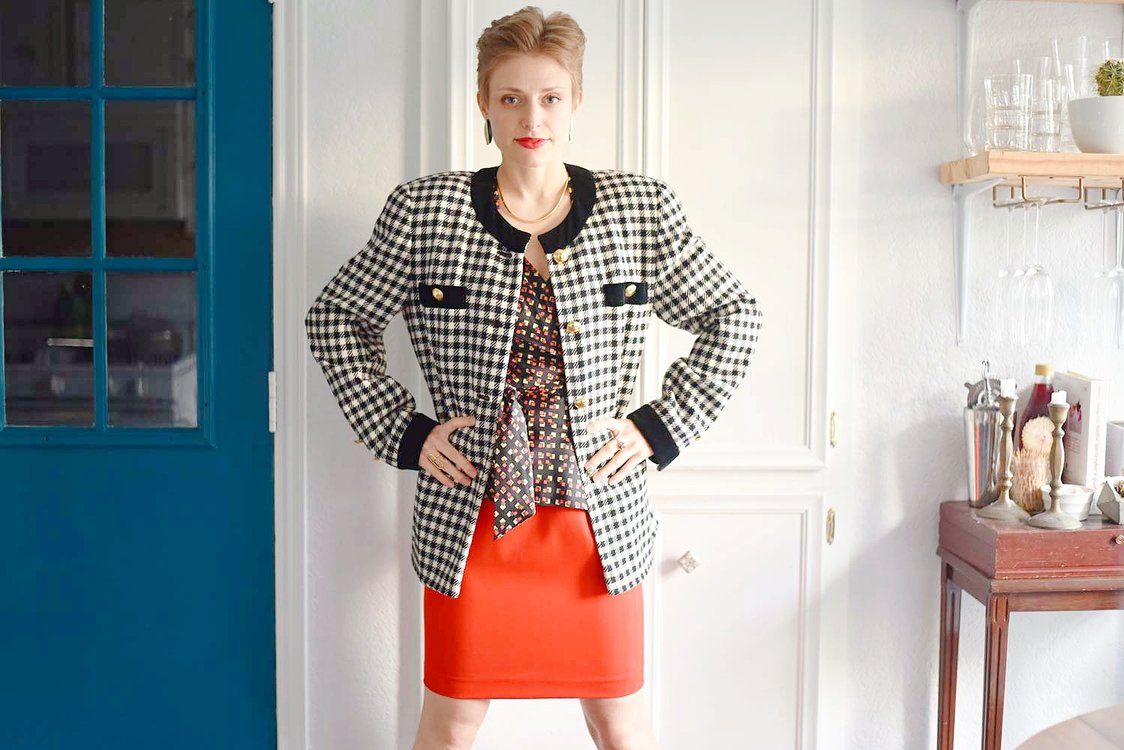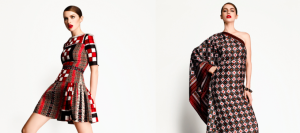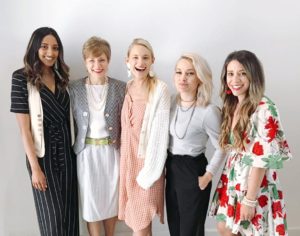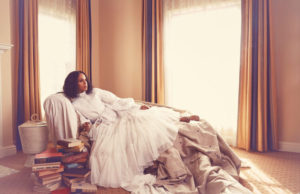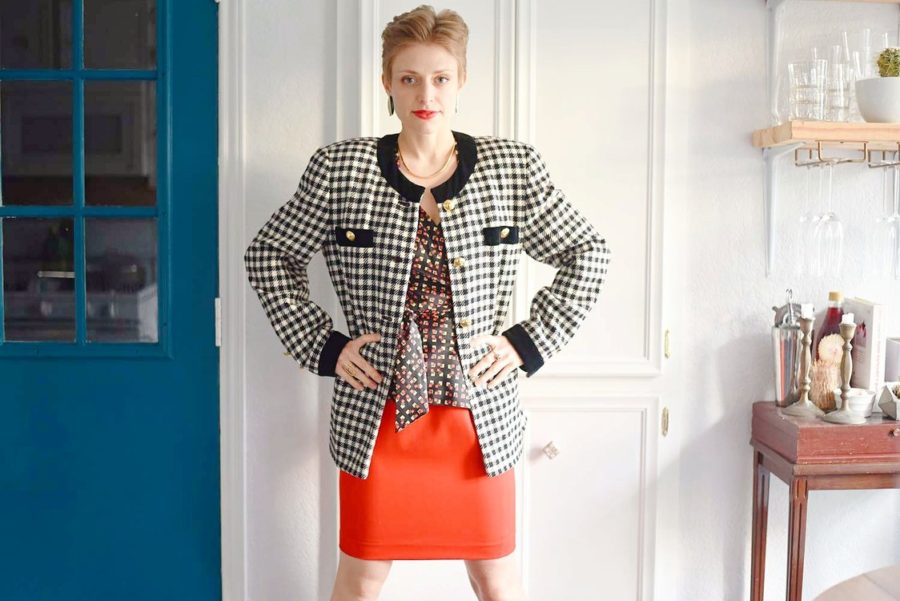
Splurge season has sprung. Since you’re reading a fashion blog, I’m assuming that means you’ll be indulging in more than eggnog and panettone (please not the boxed kind).
If your craving is for clothes, whether for you or someone else, it’s a good time to invest in something that will last a lifetime. “Fewer, better things,” as we like to say in ethical fashion lore. To this, I’d also add, “more, vintage things” if minimalism ain’t your cuppa tea.
I’ll never judge you for a worthy wardrobe splurge. You’re entitled to look and feel like a fiery goddess and if clothes make you feel that way, go for it! My job here is to help you and judge brands that you buy from. Although, if you’re wanting to splurge on some clothing that can have multiple uses you might want to look for some extra fashion advice by searching for help at Filly Flair as well as other fashion sites.
So before you buy this holiday season, I want to issue a word of caution.
Be leery of
luxanthropy !
I’ve advised against shopping from ‘charitable’ fashion brands before. You know the ones I’m talking about. They reek of MLM schemes, send you invites to at-home style parties, and tell you to “Feel good about buying that necklace, girl! We give a portion of our profits to charity!”
Litmus Test for True Ethical Brands
If a brand can’t tell you how much they’re giving (10% or higher is where they’ll start having an impact) or answer questions about who they’re working with and why it’s a bad sign. It means they’re using charity to offset consumerism, and frankly, we’re past that.
A true ‘social business‘ (or related model) doesn’t give handouts. It works collaboratively with its artisans. It creates economic opportunities and pathways for incremental advancement. And it demonstrates an understanding of global development, supply chains, labor rights, and the interconnectedness, of, well, everything.
Traditionally, these ‘charity’ brands have been mid-range but I’ve seen more brands emerging in the luxury sector lately. Hence, luxanthropy. They may light up your do-gooder emotions like the National Lampoon house, but don’t buy from them without doing your homework.
To make it easy for you, here are a few splurge-worthy brands doing it right. Shop or use them as a benchmark to assess others you discover.
Luxury Ethical Brands
Rêve En Vert (REV)
If you only click one link in this post, let it be this one. REV is a well-rounded marketplace of sustainable luxury, the Dover Street Market of the ethical fashion world if you will. Their team curates cutting edge established brands as well as talents on the ascent. You can peruse with assuredness, knowing everything has been vetted to adhere to one of their required tenants: fair, organic, remade or local.
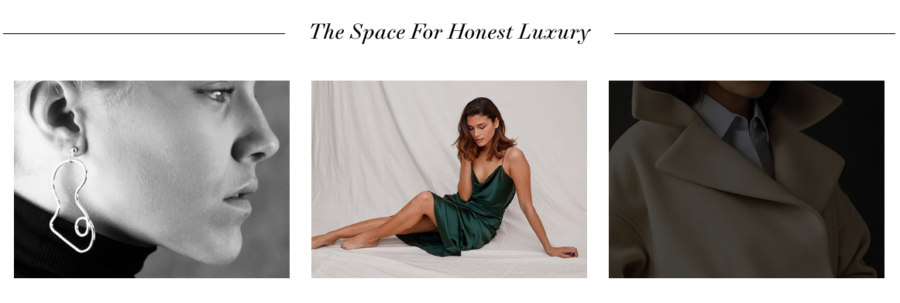
Say YAS to these stunners. And how about pairing it with this and these, toss on a cop and jet to your party with just a touch of mascara and highlighter.
Brunello Cucinelli
This is the OG Italian luxury brand. Long before the likes of Kering and LVMH were jumping on sustainability like the Milanese on saffron risotto, Brunello was working stealthily and meticulously on philanthropy and ethics. Have a read through his website copy and you’ll quickly gather why he’s been dubbed the “philosopher-designer.”
With the launch of his eponymous label in 1978, he vowed to be a “humanistic” company, seeking profit without damaging mankind. And for more than 4 decades he’s done so.
In the luxury sector, he was prescient about the decline of consumerism and the move toward more fair labor practices. Today, he gives 20% of his proceeds from his label to its philanthropy arm, now a separate entity from his company that focuses on conservation and restoration efforts, like his latest project in Solomeo.
“
With heritage brands copying Brunello’s approach to sustainability in their homeland, why aren’t more jumping on board with his subdued fashions? Maybe it’s his anti-trend approach that’s so opposite of today’s garrish-for-the-gram fashion. But in the inner fashion circles, being a contrarian is always cool.
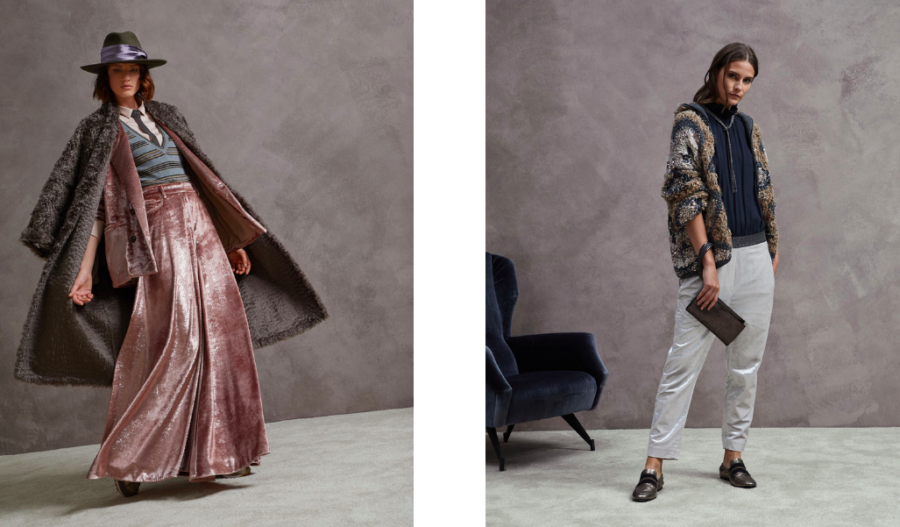
Go to BC for cashmeres and knitwear. One day, I (and you too!) will be able to afford this.
Ferragamo
Again, the Italians are leading the luxury pack. Salvatore gets a nod here because it beefed up its sustainability policy back in 2017, introducing a three-year plan to focus on its people, products, relationships with suppliers, territory, culture, environment and the much-ado-about-something ‘Made in Italy’ label.
The most noteworthy, and commercially sexy, part of this initiative thus far has been the brand’s capsule collection using Orange Fiber. This is innovative for two main reasons. First, because they did this back in 2017 before fibers from alternative plants surged in popularity (see also
Secondly, because this is a truly sustainable ‘vegan’ replacement for silk. I’ve written at length about how conventional ‘vegan’ leathers like PU and PVC can be worse for the environment than traditional leather. Same goes for most textiles. Faux silk is typically made from petrochemical-derived Polyester, which may be nicer to animals but is crueler to the earth. I don’t know about you, but I hate this ‘pick your poison’ dilemma. That’s why Orange Fibers, or related silk alternatives like Cupro and biotech-based fabrics, are promising. They’re sustainable and cruelty-free. Orange you glad?
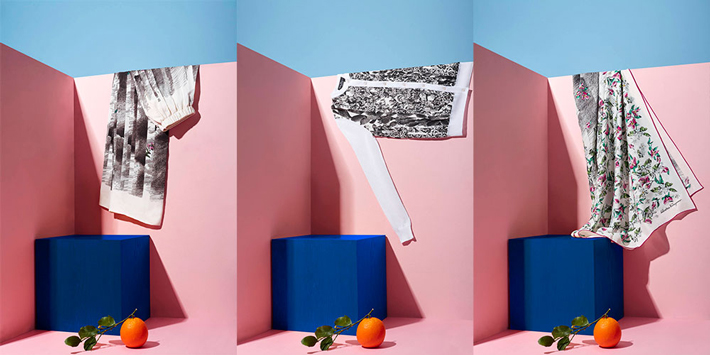
Now to your itching question. How the heck can you get your hands on some? I’m sad to report that since the capsule was produced in 2017 in a limited run I can’t find it anywhere. A thorough Ebay search only turned up results for Metamucil, and I’d strongly advise against that. So stay tuned for more collaborations from this progressive brand.
Maiyet
Maiyet’s story in ethical fashion predates mine. Founded in 2011, long before the tide turned sustainable, this brand helped to bring heritage craft back to the luxury sector, telling the story of its artisans in the process. BoF sums it up succinctly,
“Co-founded in 2011 by Paul van Zyl, a human rights lawyer, Daniel Lubetzky, an entrepreneur, and Kristy Caylor, a former head of merchandising for Gap Accessories and Product RED, Maiyet sources highly specialised and refined craftwork from artisans in off-the-beaten-path places around the world, from Nairobi, Kenya and Ahmedabad, India, to the mountains of Peru.
But crucially, Maiyet isn’t “sourcing products from the artisans; we are sourcing skills and co-developing products with them that fit into our seasonal vision,” Ms. Caylor told BoF. This distinction is the crux of the company’s business model.”
Maiyet also created the first ethically sourced and sustainable cashmere yarn that they use in their collection today.

Hi, hello (and peek-a-boo) to this sexy little dress on sale!
Maison De Mode
The Bergdorf’s of sustainable luxury. If a brand makes their prestigious curation, they’ve passed go, collected their seed money, and are flying off the racks into the closets of international collectors. What makes them a step above Bergdorf’s? Their use of the Butterfly Mark. It’s the closest thing we have to a legit ‘stamp of approval’ for luxury clothing in the US, at least right now. Also, they categorize color, classification an, trend, making an often daunting online shopping experience more chill. So grab your tea and get inspired. If MDM is out of your price range, peruse for ideas and then hit up second-hand stores to try and recreate the look. Just a friendly FYI: they do accept afterrpay.
My picks are this leopard trench, this sculptural denim dress and this sweet sweatshirt.
Behno
If you’re into the viral stardom of bags by Mansur Gavriel or Staud, opt for this brand instead. Behno upholds artisan craft while creating a modern look.
A while back, interviewed their founder, Shivam Punjya, after we got to know each other through Fashion Revolution. He told me the ins-and-outs of artisanship today. His approach is distinct because he’s trying to upend the way garment workers are viewed and treated in the industry, not only through fulfilling employment but incremental mobility gains and vital social programs. He calls this ‘The behno Standard.’
“behno” means “sisters” in Hindi. At our partner factories, individuals will refer to female colleagues by their first name followed by the suffix of “behn” (sister). In plurality, they become a community of sisters or behno.”

And these sisters make a mean bag! Like this shiny saddle or tasteful tote.
Viktor & Rolf
This one might make you go, huh? because you’ve probably only heard V&R make headlines in Haute Couture. The flowers, the tulle, the sculpture! These French designers have been spinning their signature designs that look destined for the Met’s Costume Institute for 25 years. But they’ve also been stealthily ‘upcycling’ before that word was in fashion’s vernacular.
Most of the time they source fabric from their own archives to create new designs, but more recently they’ve expanded into vintage archives that pre-date their eponymous line. And, not surprisingly, they’re starting to be more vocal about upcycling and are making headlines through more approachable collaborations that bring upcycling to the masses.
You’re probably not going to buy any of this stuff, but stares are free and drooling can be nice sometimes. I’m partial to Spring/Summer 2017.
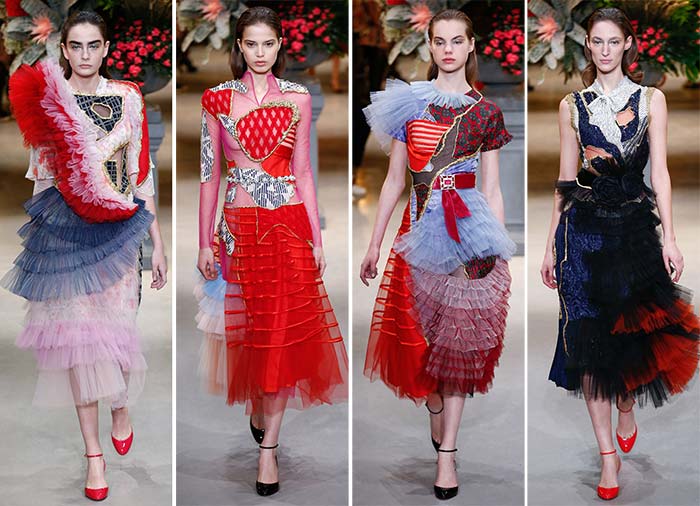
That’s all the luxury I can cram into one post. And now for my disclaimer: I fully understand that these brands are
Here are some alternative options:
- Bookmark these brands and look for them secondhand (try The Real Real)
- Shop my Depop curation. It’s mostly luxury.
- Shop more affordable artisan and transparent brands.
Affordable Ethical Fashion
Currently, these are my go-to brands. You can consult my shopping page for more. Look for ones with a $ or $$ labels.
Mamoq for discovering up-and-comer indie brands.
Bead & Reel for fair trade, Cali girl staples.
Everlane for sweaters and the fleece you’ve been craving.
Cuyana for classics.
Reformation for cool girl pieces.
G-Star Raw for edgy denim (for men too). Especially accessible during sales.
What are some of your favorite luxury ethical brands?

